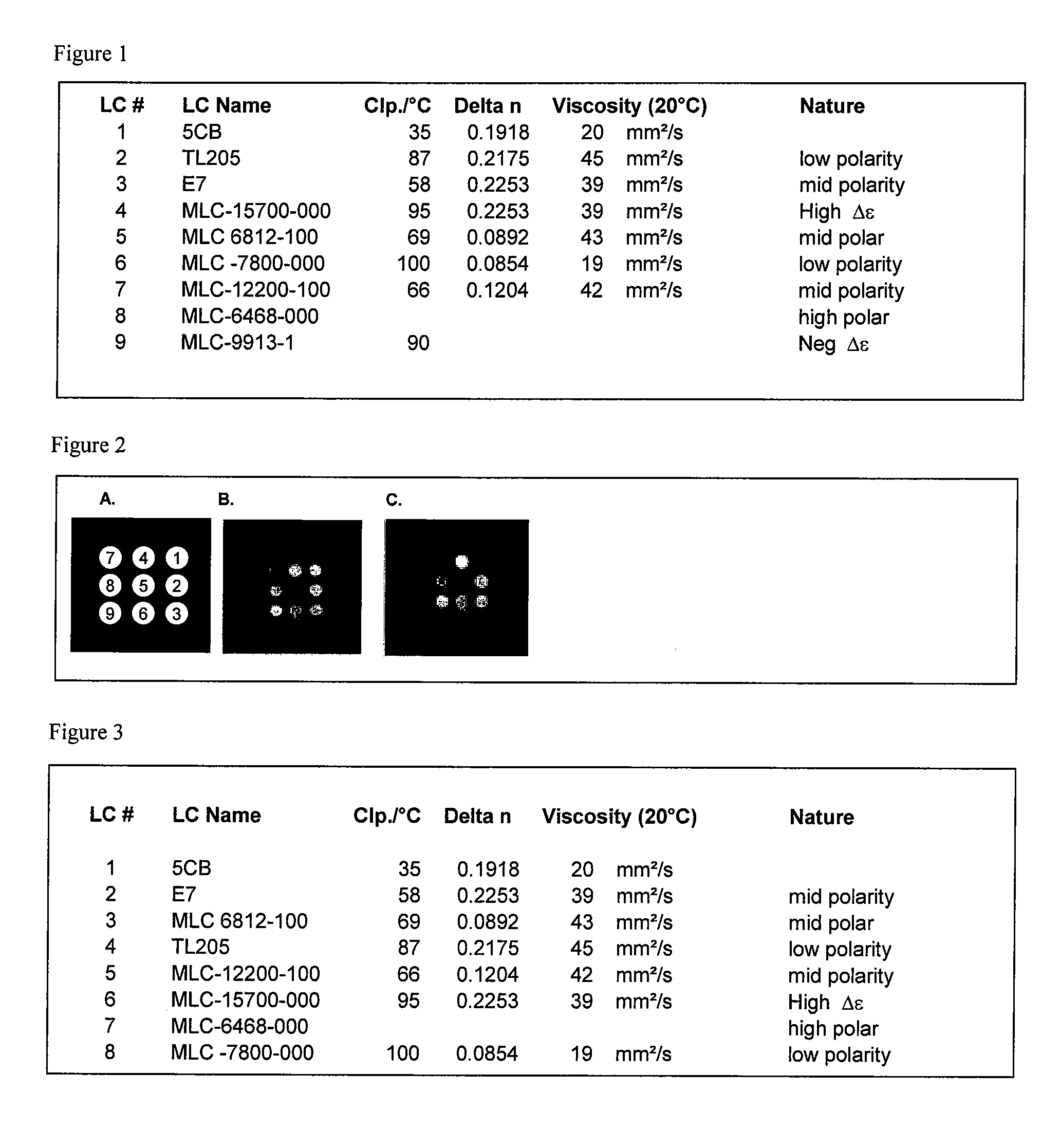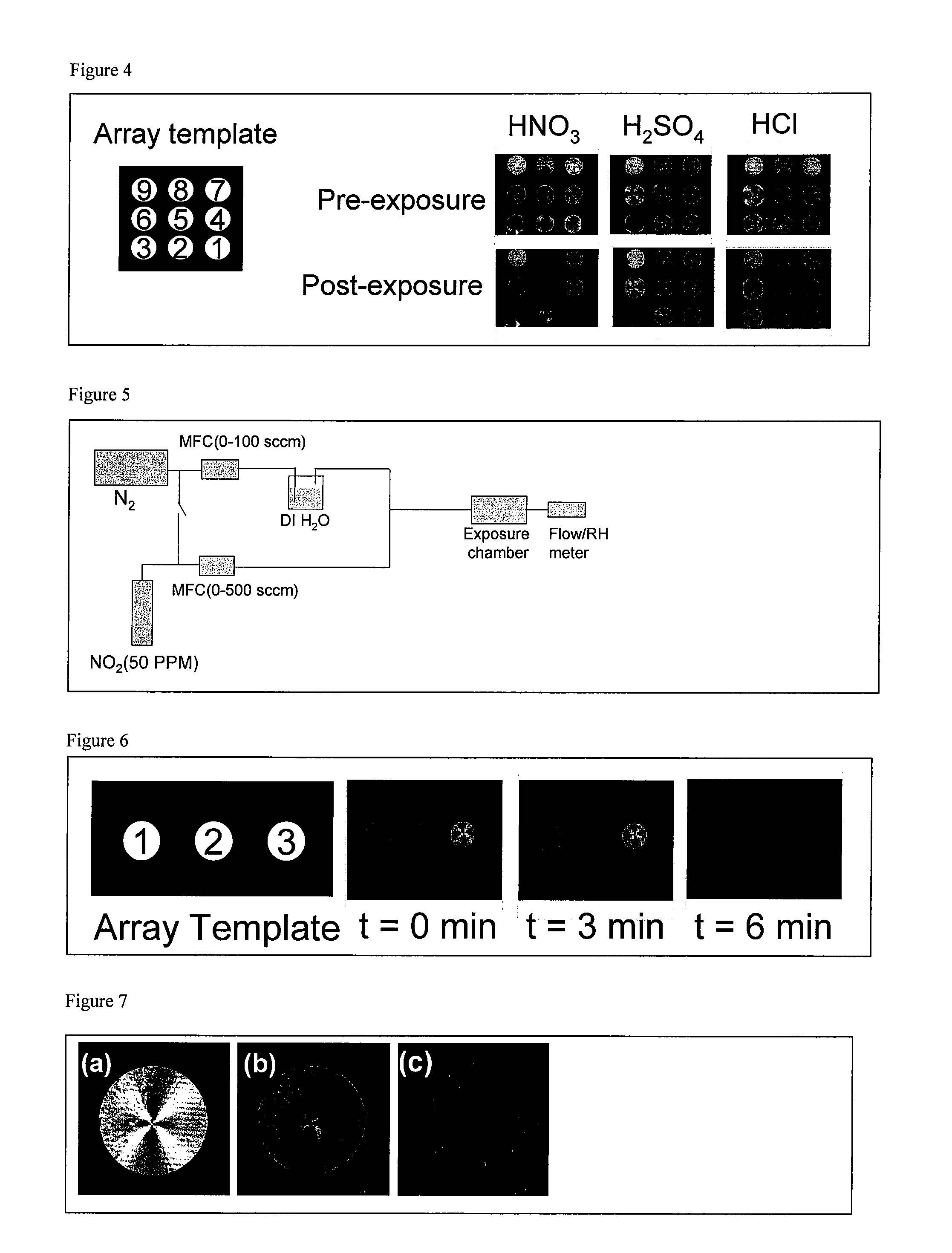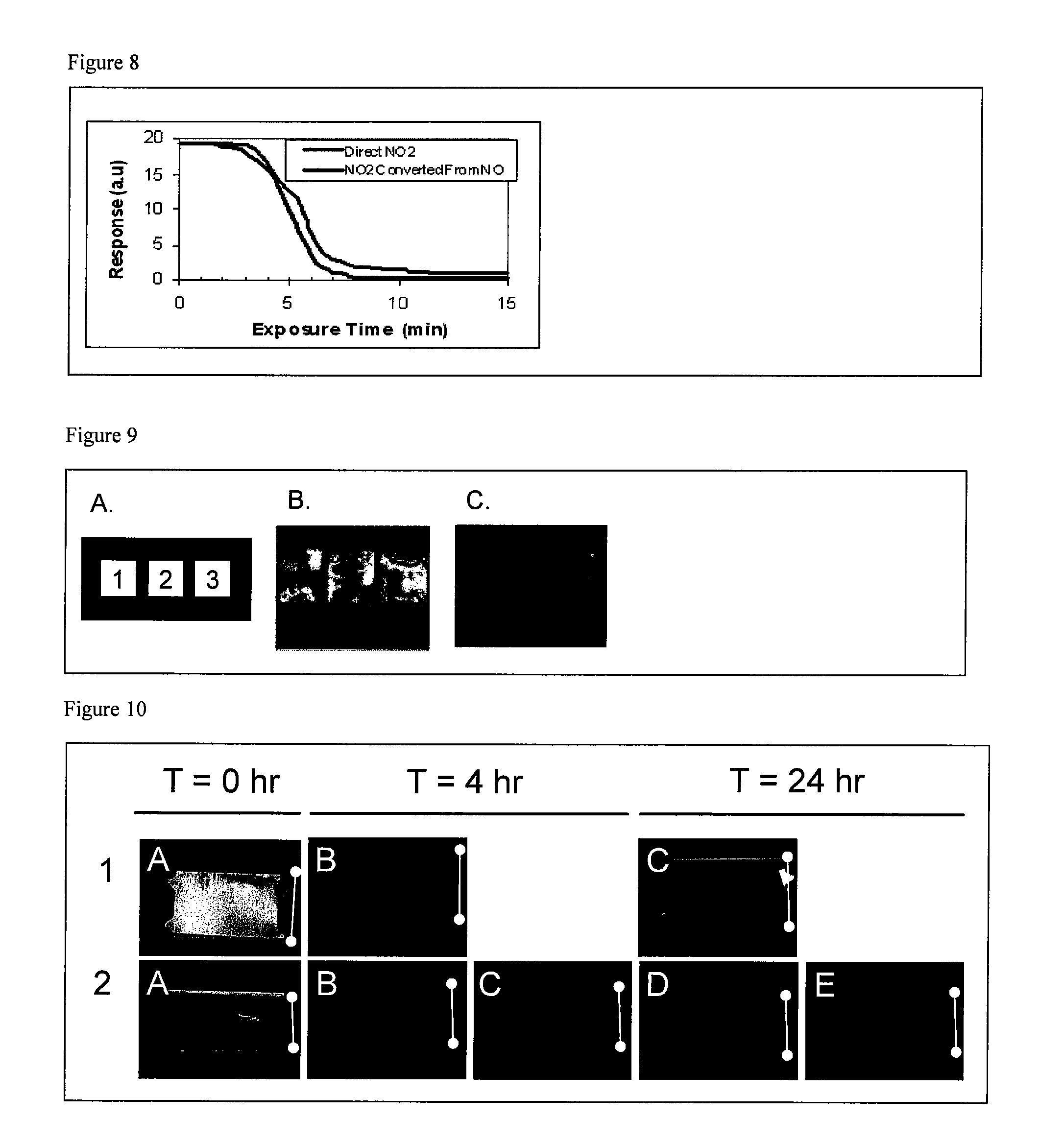Detection of vapor phase compounds by changes in physical properties of a liquid crystal
- Summary
- Abstract
- Description
- Claims
- Application Information
AI Technical Summary
Benefits of technology
Problems solved by technology
Method used
Image
Examples
example 1
Screening of LCs for Ability to Detect Nitric Acid Vapor
[0165]This example describes the identification of liquid crystals that can be used for detection of nitric acid vapor. The screen was performed by using a single substrate that contained a 3×3 array of micropillar features to aid in spreading and maintaining a thin film of liquid crystals, as shown in FIG. 2. The substrate was treated with titanium and gold. The substrates were prepared by depositing ultrathin (optically transparent) gold films onto glass substrate by electron beam deposition. Uniformly coated chips (100 Angstrom gold on a 20 Angstrom titanium adhesion layer) with micropillar features were spotted with ˜0.6 μl of 9 different liquid crystal candidates (FIG. 1). The sensor chip was placed into a petri dish and a 110 μl droplet of 70% aqueous solution of nitric acid (HNO3) was deposited proximal to the chip inside the dish. The dish was covered with a lid and the edges were sealed by wrapping with parafilm. This ...
example 2
Specificity of LCs for Detection of Nitric Acid Vapor
[0166]This example describes the specificity of 3 LCs for detection of nitric acid vapors. The screen was performed by using a single substrate that contained a 3×3 array of micropillar features, as shown in FIG. 4. The substrate was treated with titanium and gold. The substrates were prepared by depositing ultrathin (optically transparent) gold films onto a glass substrate by electron beam deposition. Uniformly coated chips (100 Angstrom gold on a 15 Angstrom titanium adhesion layer) with micropillar features were spotted with ˜0.6 μl of 9 different liquid crystal candidates (FIG. 3). The sensor chip was placed into a petri dish and a 110 μl aqueous solution of either nitric acid (HNO3, 70%), hydrochloric acid (HCl, 37%) or sulfuric acid (H2SO4, 70%) was deposited proximal to the chip inside the dish. The dish was covered with a lid and the edges were sealed by wrapping with parafilm. This exposure chamber was sandwiched between ...
example 3
Detection of Nitrogen Dioxide Using LC-Based Sensors
[0167]This example describes the conversion of nitrogen dioxide to nitric acid vapor and the subsequent detection by liquid crystals. Nitric acid vapor was generated by mixing nitrogen dioxide (NO2) gas at 50 ppm in nitrogen with moist nitrogen (N2) generated by bubbling through water. The rate of flow of each gas, i.e., NO2 and N2 (bubbled through water), was adjusted using mass flow controllers (0-100 sccm and 0-500 sccm) to achieve desired concentrations and then the gases were mixed together. The flow of the nitrogen dioxide and nitrogen bubbled through water was adjusted so that the total flow was 200 sccm. The relative humidity of the nitrogen bubbled through water was ˜96% and reduced to ˜80% after mixing with nitrogen dioxide. A diagram of the gas generation system and exposure set-up is provided in FIG. 5. The sensor consisted of a 1×3 array of three different liquid crystals (5CB, MLC 6812-000 and MLC 12200-100) that were...
PUM
 Login to View More
Login to View More Abstract
Description
Claims
Application Information
 Login to View More
Login to View More - R&D
- Intellectual Property
- Life Sciences
- Materials
- Tech Scout
- Unparalleled Data Quality
- Higher Quality Content
- 60% Fewer Hallucinations
Browse by: Latest US Patents, China's latest patents, Technical Efficacy Thesaurus, Application Domain, Technology Topic, Popular Technical Reports.
© 2025 PatSnap. All rights reserved.Legal|Privacy policy|Modern Slavery Act Transparency Statement|Sitemap|About US| Contact US: help@patsnap.com



